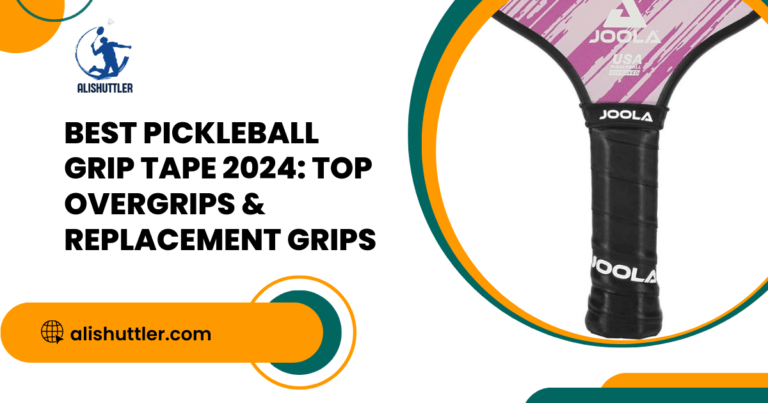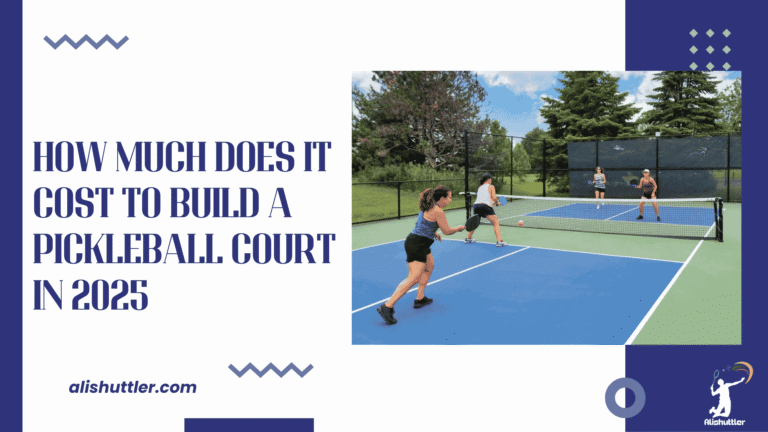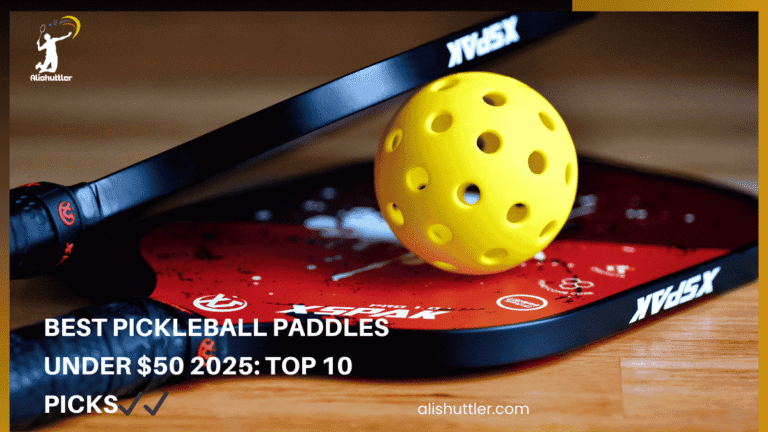Paddle tennis shoes are court shoes designed for traction, side-to-side motions and quick slides on textured concrete or sand-filled artificial turf.
The majority employ a herringbone rubber sole to grip and a rigid heel cup to provide a secure landing.
Toe caps take care of drag on volleys & serves! Mesh uppers ventilate heat.
EVA foam and a TPU shank ease impact and twists. Wide feet love roomy toe boxes and widths.
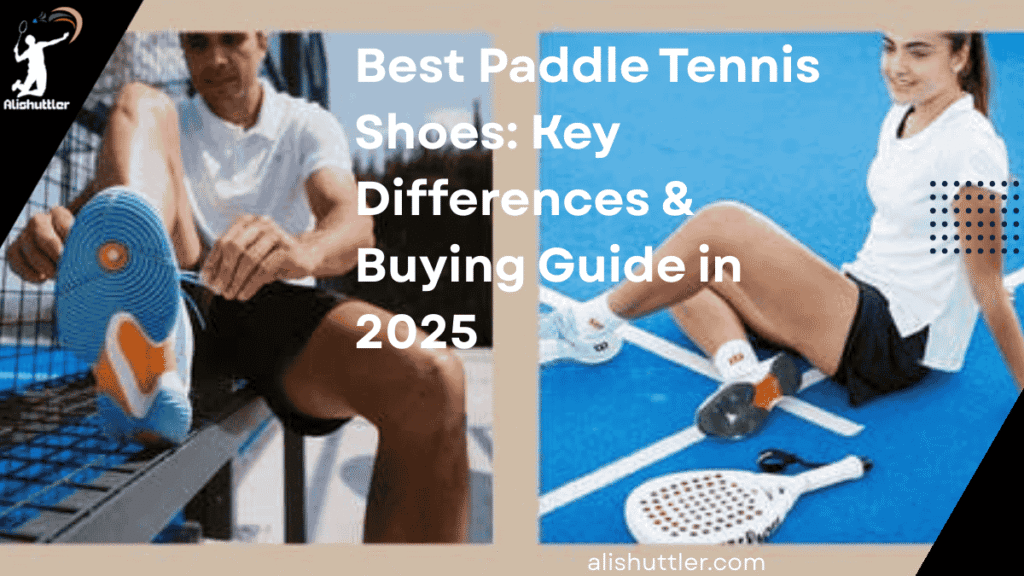
We explore fit, weight and value in the sections below.
Ideal Shoe Anatomy
Padel shoes require traction, lateral support, and durable abrasion resistance to enhance your game. Each feature needs to work together, allowing padel athletes to accelerate quickly, stop sharply, and avoid fatigue during real match play.
1. Sole Design
Because it channels sand out and keeps more rubber in contact with the court, a herringbone tread grips sanded/arti turf well. On dry, compact surfaces a tighter herringbone with shallow grooves limits slide. On loose sand, a wider, deeper pattern chews better.
Select rubber blends that feel tacky to the hand but do not shear on toe drags. High-mileage players might opt for a denser compound in high-wear zones under the big toe and lateral forefoot. Seek out abrasion ratings from the brand when provided.
Steer clear of soles that are thin under the heel, they bottom out on hard pace. Ultra-hard compounds endure, but they can slice across dusty rug and transmit more shock into your joints.
Match thickness to your court and style. A midsole + outsole stack in the 25–30 mm range provides shock control for regular play, while a lower stack boosts court feel for rapid, light footwork.
2. Upper Construction
Synthetic leather and mesh blends retain form, breathe and keep weight at bay. Reinforced toe caps and lateral overlays take drag on volleys and the stop-start grind along the fence. Vent zones along the vamp and medial quarter aid heat escape when rallies extend.
A secure lacing cage with a padded tongue secures your midfoot so you don’t slide forward on hard brakes, which rips blisters and black toenails. Test eyelets pull evenly; small shifts in lace path can fix pressure hot spots.
3. Midsole Cushioning
EVA foams and gel pods absorb impact from jumps and sprints without feeling mushy. The objective is speedy rebound with a solid platform for cuts. If you have knee pain, or pound on hard, painted concrete, additional heel gel or a dual-density heel wedge can mitigate impact forces.
Technology table:
- EVA: light, lively, cost-effective; good for most players.
- PU: durable, stable under heat; better for heavy or daily play.
- Gel/insert systems: targeted impact relief; useful for heel strikers.
4. Support System
Reinforced sidewalls and a midfoot shank restrict foot roll when you plant wide or slide out of corners. Lateral outrigger flares provide a safer base without added bulk.
A padded collar and shaped heel counter keep your ankle centered. This aids newer players who over-rotate and seasoned veterans who pop off explosive diagonals.
Choose arch support to fit low, neutral or high arches. Removable insoles make space for custom orthotics when the time comes.
5. Material Science
Designed mesh shaves ounces and dries quickly, while coated synthetics fend off toe drag. Hybrid weaves mix flex at the forefoot with locked sides for stops.
EVA saves grams and feels springy. PU keeps its shape longer in heat and heavy wear. Most shoes mix both to strike a pragmatic balance.
Outsole rubber mixes vary grip, flex and wear. Softer mixes grip dusty turf, firmer mixes last through rough sand. Outsole material selections determine shoe weight, flex, and the break-in time you’ll experience on day one.
Tennis vs. Paddle
Tennis and padel and paddle (in some countries) seem very similar from the outside, but the footwork is different. Tennis drives long sprints, hard stops, and forward attempts. Padel squeezes short sprints, continuous turns and rapid lateral movements into more compact area. These swings alter what you require from a shoe.
Design, outsole, cushioning and upper support all shift to the sport’s movements and court surface.
Softer soles and cushioning tuned for padel movement
Paddle tennis shoes employ a softer sole compound and tuned cushioning to accommodate the explosive, multi‑direction moves found on synthetic turf and sand‑dressed courts. That softer combination sticks harder and allows you to spin it without a rough hook.
Several padel-specific models include precision-placed foam beneath the forefoot and heel to absorb regular takeoffs and landings adjacent to the net and glass. Instead, many tennis shoes engineer firmer midsoles and denser rubbers for push-off power and wear on hard courts.
The outsole on padel shoes is typically biomechanically designed with vortex or spiral zones beneath the ball of the foot and heel to facilitate clean pivots in any direction. This design aids you pivot quickly without turning tension, which reduces the probability of ankle and knee injuries.
Tennis and paddle shoes both shield your foot, but their materials and tread patterns cater to different courts, loads and abrasion zones.
Why padel demands extra lateral support
Padel demands sharp sidewall cuts, split steps into smashes, and constant recovery shuffling. Those moves load the midfoot and the lateral side of the shoe. Padel shoes respond with wider outrigger shapes, reinforced eyestays, and sidewall cages that lock the foot down onto the platform.
It’s all about stable landings, fast re-centering and reduced roll hazard. Tennis shoes facilitate lateral movements, but most add more stability to the toe bumper and inside arch to absorb repeated slides and extended baseline exchanges on hard courts or clay.
Across both sports, the upper fabrics, toe wraps and heel counters are essential to durability and foot protection. If fit is tight, stability drops quick, so it’s usually wise to go a half or full size bigger, particularly if you rock some thick socks or play in the heat.
Key differences at a glance
- Outsole design: Padel uses vortex/spiral pivot zones. Tennis leans towards herringbone or modified patterns for linear grip and controlled slides.
- Support features: Padel leans on lateral cages and outriggers. Tennis relies on toe drag guards and heavier midsole posts.
- Intended surfaces: Padel shoes suit synthetic turf or sand‑dressed courts. Tennis shoes target hard, clay, or grass. They use padel shoes on turf or even hard courts, but not sure if they’d suit regular hardcourt tennis.
The Cost of Play
Paddle tennis comes with a real cost. Some play is free — like pickup games outside or free online drills — but court sports require equipment and venues. Costs vary by brand, build, and location, and they accumulate more quickly if you play frequently or opt for high-end equipment. Many people still see the spend as fair value: play lifts mood, sharpens focus, and supports long-term health, which can offset the bill for some.
Shoes rank high on the list. Court Paddle Tennis Shoes with reinforced outsoles, toeguards and stable midsoles cost more than plain trainers, but they grip better and can reduce injury risk. Anticipate entry shoes with basic rubber and foam, anticipate higher end shoes with more robust shank support, denser rubber, and lighter weight uppers. Weight in grams, breathability by mesh density.
If you play twice a week on abrasive courts, expect a new pair every 4–6 months. Switch partners to extend life. Out-of-season models provide great bang.
Rackets cover broad swaths as well. Composite frames with fiberglass are less expensive carbon blends and enhanced balance tuning rank loftier. Heavier frames can assist power, lighter frames can assist arm comfort. Strings and overgrips are little, but consistent expenses.
Paddle Tennis Shoes wear out quick, especially on rough courts, so bulk buy if you can. Clothing is flexible: moisture-wicking tops and cushioned socks help, but you can start with what you have. An essential bag keeps equipment dry and organized.
Courts fuel continuing expense. Public courts are often free or inexpensive. Private clubs or indoor venues charge by the hour and fees increase at peak hours. Memberships drive down the hourly rate if you play a lot, but they’re a barrier for some, particularly in low-facility areas.
Group play and split bookings assist. Booking during off-peak hours assists as well.
Technology ramps up the ceiling. High-tech shoes, shock-absorbing insoles, smart sensors, and premium frames are just more expensive. For serious players, the cost can be significant. Most continue to refer to it as a good investment in relaxation and bonding time.
Research connects play with intellectual advances, something important to cost-benefit thinkers.
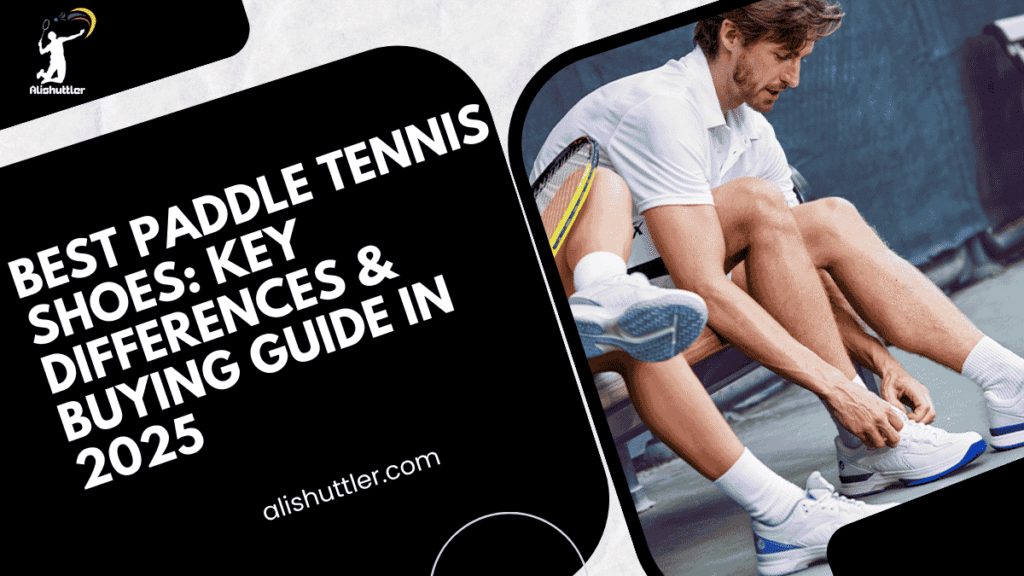
Costs may differ based on location. The ranges below use standard retail in USD as a guideline.
| Item | Entry-level avg. | Mid-range avg. | Notes |
|---|---|---|---|
| Paddle tennis shoes | $60–90 | $100–150 | Look for durable outsole, stable midsole |
| Racket | $80–120 | $150–220 | Frame balance and stiffness matter |
| Balls (3-pack) | $5–8 | $8–12 | Buy multi-packs for savings |
| Court rental (per hour) | $10–25 | $25–45 | Split with 2–4 players |
| Accessories (grips, socks, bag) | $30–60 | $70–120 | Replace grips often |
Your Perfect Match
Select your proper Paddle Tennis Shoes based on your style of movement, playing surface, and foot structure. Match grip, lateral support, and cushioning to your goals for optimal performance on the padel court.
Playing Style
If you approach the net and search for fast winners, gravitate toward lightweight shoes with a low-to-the-ground ride, stable midsoles and a locked-in heel counter. That blend keeps you moving at the pace you need to accelerate initial steps, pivot quickly and halt on a dime without a point-scoring slide.
High-level players who pursue sharp angles and lightening round rallies dig sticky outsoles, locked-down sidewalls, and responsive cushioning that rebounds after each load. If your game is steady and you grind points, select a model with extra foam under the heel and midfoot, along with a fortified upper, so long sessions feel less brutal and joints remain quieter.
New players benefit from balanced Paddle Tennis Shoes: moderate weight, stable base, and plush but not mushy cushioning to build clean footwork and lower strain as they learn.
Court Surface for Paddle Tennis Shoes
Outsole patterns are just as important as the midsole. On sand-infilled artificial turf, a full herringbone (zigzag) or micro-herringbone grabs the fibers with no clog, so push-offs remain crisp. On outdoor courts with sandy or loose-grit surfaces, a deeper, wider tread helps shed the particles and clings to traction when you do a hard brake.
Indoor acrylic or smooth synthetic floors demand tacky, non-marking rubber with a flatter pattern to retain more rubber on the floor. Some shoes employ tougher rubber compounds and toe guards for outdoor wear, while indoor-first models prefer lighter builds and softer rubber that grips, but may abrade more quickly outside.
If you play mixed venues go for a hybrid pattern and a midweight design that balances grip with durability.
- Artificial turf (with sand): full or micro-herringbone, mid-stiffy midsole, wrapped outrigger.
- Sandy outdoor: deeper lugs, harder rubber, reinforced toe and medial side.
- Indoor acrylic/synthetic: flat-to-shallow tread; non-marking rubber; lower stack for feel.
- Multi-surface use: hybrid herringbone; medium rubber hardness; balanced cushioning.
Foot Type for Paddle Tennis Shoes
Test your arch before. High arches usually respond well to shaped insoles and slightly more heel cushioning to disperse load. Neutral arches are fine with standard relief with even foam. Flat feet respond well to more firm midsoles, a stable heel cup, and gentle medial support to prevent overpronation on lateral moves.
- Fit checklist: toes have 5–8 mm space; no forefoot pinch; heel doesn’t lift.
- Support checklist: midfoot holds snug; torsion bar or midfoot plate resists twist; sidewalls prevent rollover.
- Comfort checklist: no hot spots after 20–30 minutes, foam springs back yet doesn’t feel jiggly, outsole flex aligns with your stride.
Mind breadth. If you’ve got broad forefeet seek out wide or roomy toe boxes and stretch-knit uppers. Narrow feet may opt for form-fitting lasts.
STALKS at the end of the day, STALKS lateral shuffles and split-steps, and STALKS sizes across brands because length and volume differ.
Beyond the Basics of Paddle Tennis Shoes
Technology now defines how paddle tennis shoes fit and wear. Moisture-wicking linings pull sweat away from the foot, and antimicrobial treatments keep the stank at bay between matches. Customizable insoles allow you to customize arch height and heel cup depth, which really helps if you suffer from flat arches or high insteps.
Lightweight constructions, typically less than 350 g/shoe (42 EU), reduce fatigue over extended rallies. Flexible uppers and segmented outsoles accelerate fast stops and re-starts, which can trim milliseconds from reaction time at the net. If you play 3+ sessions per week or compete, premium models with reinforced medial walls, denser sidewalls and abrasion guards deliver superior durability and steadier support over months of use.
Weather Impact on Paddle Tennis Shoes
Wet courts require water‑resistant uppers or quick‑dry synthetics that repel splash and prevent the shoe from becoming heavy. Seek out gusseted tongues and low seams to reduce water infiltration.
In heat, open‑mesh panels and vented toe boxes maintain air circulation. The moisture-wicking linings are optimized by thin, breathable socks. Cold days can require thicker uppers or light insulation around the forefoot.
EVA foams get stiff in the cold, so try them out before play to check for flexibility. Turn pairs so one can dry for 24 hours. This staves off midsole breakdown and maintains grip on soggy or steamy days.
Lifespan Extension Paddle Tennis Shoes
Simple care extends a shoe’s life by months and shields performance. After every session, tap soles to remove clay, dust or sand which can grind down tread. Brush softly and use mild soap on the upper, stay away from harsh cleaners that dry out synthetics.
Air dry at room temperature, as direct heat can warp midsoles and degrade glues. Keep in a cool, dry place away from sun to minimize UV damage and delamination. Swap insoles every 3–6 months, or sooner if you notice compression lines or feel hot spots – fresh insoles renew cushioning and support.
Examine outsole wear at the lateral forefoot and heel the initial areas to deteriorate due to side and split steps. If the tread is slick or glossy, traction will slip faster, so schedule a rotation. Heavy hitters or frequent competitors should flip-flop two pairs; this allows foams to rebound, keeps your stability sharp, and balances wear between indoor and outdoor courts.
Biomechanical Edge
Paddle Tennis Shoes that balance energy return and shock control can reduce joint impact and enhance efficiency. TPU or PEBA foams provide spring for those forward bursts, while a denser carrier foam holds the plate solid in cuts. A mild midfoot shank limits torsion without obstructing natural roll.
Wrapped outrigger sidewalls, rugged heel counters and a marginally wider forefoot base assist with ankle roll resistance on lateral moves. Anatomical lasts, sculpted arch curves and targeted foam pods at the heel and 5th metatarsal alleviate pressure where most paddle players push off.
Contrast stack height, drop (e.g., 6–10 mm) and weight to suit your stride and court speed. Sample models with flexible forefoot grooves if you’re a toe-off speedster, or firmer edges if you’re a counterpuncher. If you train frequently, buy high-end constructions, they maintain structure and energy return longer.
A Personal Take
Paddle Tennis Shoes and platform tennis just tear up shoes, making proper padel shoes essential. Gritty padel courts, fast breaks, and side steps demand sport-specific shoes that provide comfort, control, and durability for longer, pain-free play.
What worked across brands and models
Over the seasons, I switched court shoes from Asics, Adidas, K‑Swiss, Babolat and Nike. The Asics Gel‑Resolution and Adidas Barricade felt most stable on choppy deck surfaces, courtesy of a solid heel counter and midfoot shank that prevented the arch from twisting.
K‑Swiss Hypercourt was a little more player friendly with a nice roomy toe box that really aided on long sessions, although it too needed an insole swap for better arch hold. Jet Mach, by Babolat, felt featherweight and flighty great for rapid accelerations but the upper wore out a little too early on sandy courts.
The Nike Zoom Vapor gripped well throughout dry days, however its lost bite quicker on sand‑coated platforms. The mini herringbone tread models provided the best compromise between bite and release when driving laterally and cutting forward. Shoes with a solid upper and rugged outsole took the court grit in stride – mesh-only builds aged quickly.
How the right Paddle Tennis Shoes changed play
With stable shoes, my split steps felt solid, and my initial push off the mark was faster. Midfoot stability was what counted it prevented my foot from rolling in or out during those hard lateral plants and spins at the net.
Shock absorption aided me more than I anticipated. Softer but still responsive foam beneath the heel and forefoot took the sting out of frequent landings and reduced stress on knees and hips. Not too sticky grip to snag resetting of stance.
Comfort brought longer sessions and cleaner footwork, which boosted confidence and made points feel easier.
Practical buying priorities for new players
Begin with fit. Shoot for a secure heel, locked midfoot and thumb’s width at the toes for splay. If you wear orthotics, bring them with you and try in‑store.
Seek out a stiff heel counter, a midfoot shank or plate, and a partial herringbone outsole. Select abrasion resistant uppers featuring reinforced toe and medial drag zones. Look for a 6‑month outsole warranty it’s usually an indicator of a harder rubber designed for abrasive courts.
Materials count: reliable rubber compounds, abrasion‑resistant overlays, and dense mesh last longer and shield feet better. Weight is ok to observe, but stability and support should outweigh grams.
Why investing in quality pays off
Less expensive sneakers are okay for the casual play, but regular players will benefit more from custom‑engineered pairs that support joints and stabilize stance.
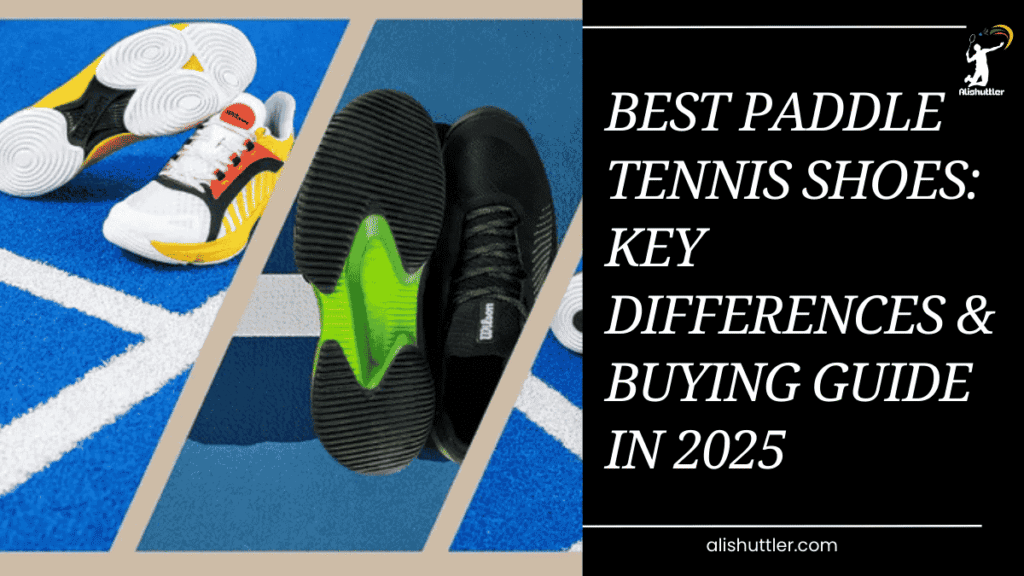
Fewer tweaks, less downtime, longer wear tends to make up for the higher price over a season.
Final Thoughts on Paddle Tennis Shoes
Nice shoes make play seem sleek and airy. Grip on glass sand courts. Grip slides slightly on dry indoor courts. Side support keeps ankles secure on stop and go moves. A sticky heel pad slashes shock on hard courts. A rugged toe cap protects the upper in scrapes. Tennis shoes can work on certain courts. Paddle shoes match the play on most courts.
Price covers the spectrum. Buy up for hardy construction and robust traction. Spend less to try comfort. Fit comes first. Your toes deserve space. Heel stays locked. No rub on the arch.
As a quick experiment to choose, select one for sand courts and one for dry courts. Experiment with quick drills. Stop on note grip. Ready to dial yours in? Grab one, play a set and let us know what you discover!
Frequently Asked Questions
What features make an ideal paddle tennis shoe?
Check out the importance of proper padel shoes that feature great lateral support, a solid heel, and a secure midfoot. Opt for a rugged toe cap, breathable upper, and EVA or PU cushioning to enhance your game on the padel court. An 8–12 mm heel drop and 300–380 g weight strike a balance between comfort and agility, ensuring good shock absorption for padel athletes. Non-marking outsoles are necessary.
Can I use tennis shoes for paddle tennis?
Yes, but pick your battles. Clay-style herringbone outsoles provide terrific grip on sand-filled padel courts. Steer clear of ultra-slick hards court soles that can slide too much. If you can, choose proper padel shoes for enhanced lateral support and toe protection.
How much do paddle tennis shoes cost?
Most good padel shoes range from USD 80–160 (EUR 75–150) a pair, with top-of-the-line models costing more. Anticipate 4–6 months of durability with consistent play on a padel court, varying by player movement and specific padel surface.
How do I choose the right fit?
Target a secure midfoot and locked heel with 5–10 mm space at the toes when selecting proper padel shoes. Try these shoes post-exercise, when feet are a bit swollen, ensuring they provide enough ankle support for padel athletes to prevent injury.
Which outsole works best on paddle courts?
For sand-filled artificial turf, a full herringbone or omni pattern holds on and drops sand, making it crucial for padel athletes to choose the right shoes. On less sandy courts, mixed patterns provide traction without sticking, ensuring comfort and stability.
Do I need special insoles or orthotics?
If you have arch pain, plantar fasciitis, or pronation issues, using proper padel shoes with supportive insoles can do the trick. Select solid, not spongy, arch support for optimal comfort and stability during your game.
What do experienced players prefer in real play?
Preferably, padel athletes love stable padel shoes with reinforced sides, medium cushioning, and grippy herringbone soles. Most fit tight for fast pivots, ensuring the right shoes provide enough ankle support for real match play.



